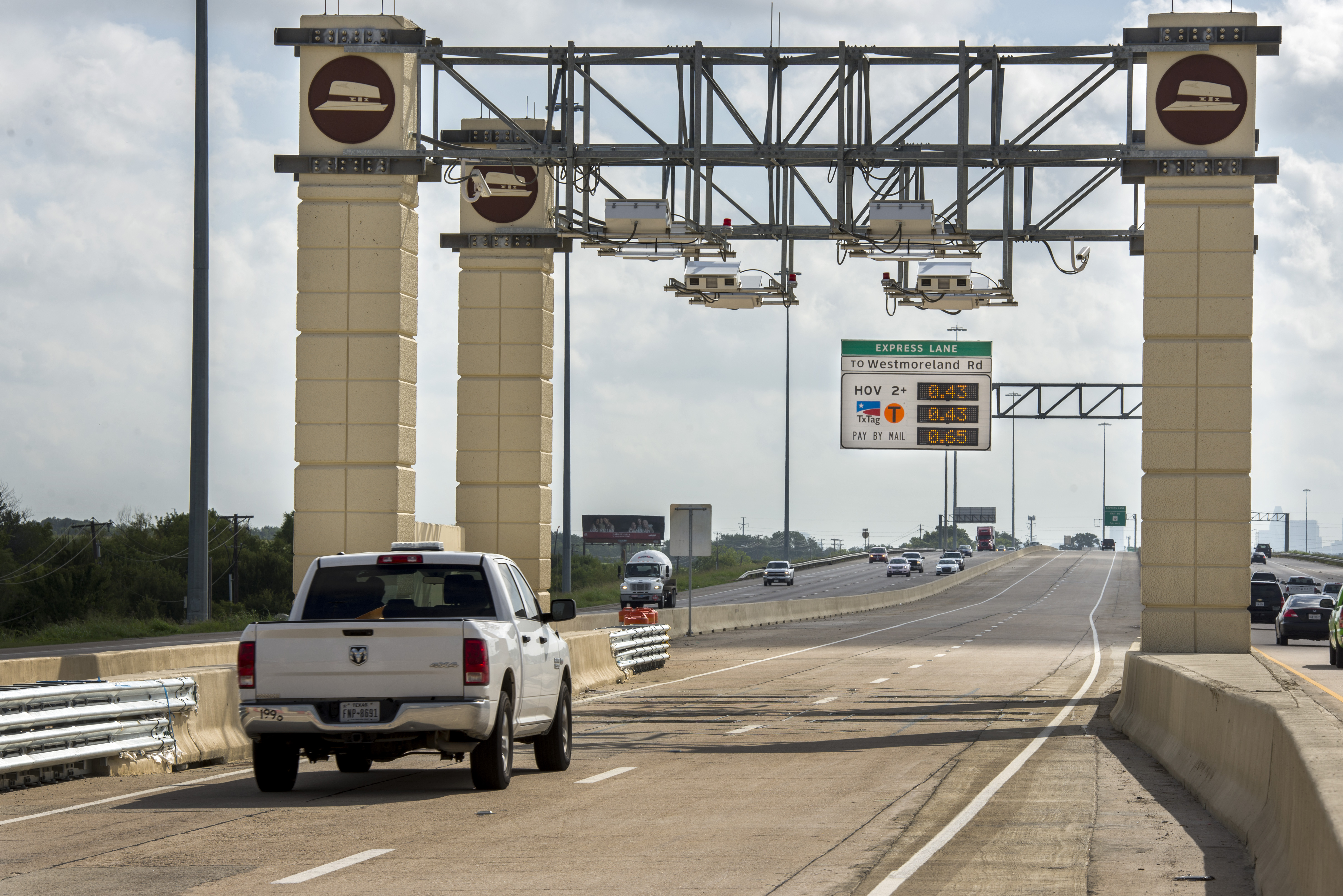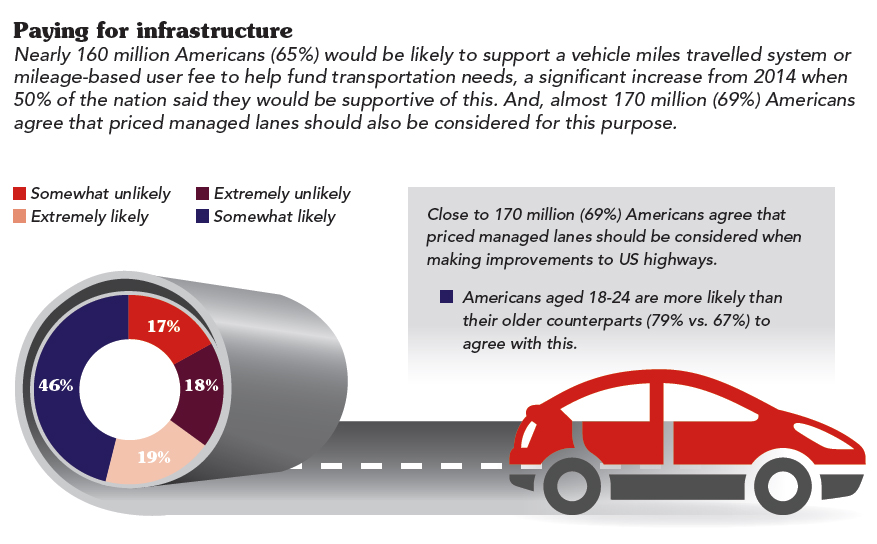
Many authorities in the US and beyond have converted, or are converting, parts of the highway network into ‘Managed Lanes’ and charging motorists a fee to avoid the delays on the adjoining free use lanes. Some authorities have converted underused High Occupancy Vehicle (HOV) lanes into priced-managed high occupancy/toll lanes (HOT lanes) whereby the price charged can vary depending on a number of factors.
Some in the toll industry suggest that HOT or managed lanes are more a traffic control and metering methodology than a revenue generating mechanism. Keep in mind that in the US at least, most managed lane projects are operated by state DOTs, where success is often measured by improved traffic conditions within the corridor, instead of revenue generation. A project that loses money but improves traffic flow may be deemed a ‘failure’ in a traditional tolled project. But from a DOT perspective a relative small monetary loss which improves traffic flow is likely to be far less costly than reconstructing a road or providing alternatives such as rail transit.
As many managed lanes are conversions from high occupancy lanes, much of the infrastructure, both physical and electronic, is already in place and traffic flows along the corridor are well established. Even so the practical and financial success (or otherwise) appears to be variable at best and almost impossible to predict with any degree of confidence. In part this is due to the structure under which managed lanes operate which is often dictated by political rather than financial imperatives.
Consequently, this patchwork of political imperatives has led to a wide variety of charging structures on managed lanes. Some schemes have a fixed price and/or offer free passage to multiple occupancy and zero emission vehicles and may only operate only in peak periods. In other examples a fee may be a permanent factor but can be varied according to current conditions or the time, day or journey length. In reality no two projects are identical, making benchmarking and knowledge sharing particularly difficult.
Usually the main aim in setting the toll rate is to maintain a target speed in the managed lane but as drivers are able to choose whether to use the free or managed lanes, this is a complicated calculation. With dynamic pricing the toll is used to manage how many vehicles enter the managed lanes so they don’t bog down to a standstill along with the non-toll lanes. So although the toll rate may not be directly dictated by the congestion in the non-toll lanes, it closely reflects that situation.
Driver behaviour is another variable. Studies have shown that drivers decide whether or not to use the managed lanes depending on the perceived time saving and the value they put on that saved time (ITS International Jan/Feb 2014). The Miami Herald found that the higher the variable toll was set on the I-95’s managed lanes, the more drivers were likely to be lured away from the free lanes because they perceived there was a greater time saving to be made. However, as more drivers opt to use the managed lanes, the congestion on the free use lanes diminishes and with it the potential time savings.
In order to maintain traffic speed in the managed lane, the toll rate becomes a balancing act of determining a price point at which driver A will deem it too expensive to use in a specific window of time, while driver B sees it as an acceptable cost to save time - for today at least. The suggestion is that drivers choosing to pay the fee will be those with non- repeating needs (hospital appointment, a flight to catch…), rather than regular commuters.
The reality depicted in Michael Janson’s and David Levinson’s paper HOT or Not was rather different. Over a two-year period the duo found that weekday time savings on the I-394 averaged 1.7 minutes in the mornings and a little over 45 seconds in the afternoon while figures for the westbound I-35 were just under three minutes in the morning and 1.2 minutes in the afternoon. As the toll prices averaged around $2.6, $1.4, $2.9 and $2.5 respectively, this meant drivers were ‘buying’ time at the rate of between $60 - $124 per hour - or roughly between $1 and $2 for every minute saved.
While reallocating an HOV lane as a HOT lane may fulfil some political objective by reducing the congestion on the free use lanes, it leaves authorities with a dilemma: should they post the journey time information they have for both the managed and free use lanes? To do so would correct drivers’ perceived time saving and dissuade some from using the managed lanes until such time that congestion increased in the free use lanes to a point where it equalled their preconceptions.
Accessibility also has to be taken into consideration from the political (but not financial) angle as charging a high premium to use managed lanes could exclude lower income drivers. Conversely, the Miami Herald’s findings indicate a high fee could increase uptake and financial viability and benefit low income drivers by reducing congestion on the free use lanes.
What various research appears to indicates is that the resulting situation can be self-perpetuating and this goes some way to explaining the wide variations in performance of superficially identical managed lanes projects. This tendency to self-perpetuate provides another layer of complexity and uncertainty when it comes to forecasting usage and revenue for future projects.
While public bodies may support a managed lane scheme that doesn’t cover its running costs because of the wider benefits it provides, the institutional investors that the US and other governments want to finance the transport infrastructure will need to make a profit. This brings centre stage traffic and revenue forecasting which has proved to have a rather poor track record with managed lanes projects and will do little to improve the confidence of private investors who need clarity about both the political and financial objectives.
Foremost among these concerns is the long term prospects for any managed lane project as there is long-standing public support for maintaining and ideally increasing the number and proportion of high occupancy vehicles. If that happens then it may be necessary to increase tolls to dissuade a greater proportion of other drivers from using the managed lanes to maintain the target speed while accommodating more non-tolled HOVs. In a car-sharing future HOT lanes may not offer significant time saving for the general motorist and therefore the HOT managed lane concept can only be seen as absorbing current unused HOV capacity. All of which adds to the complexity of making the managed lanes concept work in a business model to the satisfaction of potential private-sector investors.
The flip side is that where a managed lane project is underperforming either politically or financially, the authority (be that the public body or private investors) have at their disposal the ‘tools’ to address the situation. The handful of private concessionaires operating managed lanes treat the algorithms they use to balance traffic speed against the current toll rate as a very serious trade secret.
Changes to existing managed lane schemes raise the potential of losing public support and the prospect of meeting political resistance. So, for instance, discounting off-peak rates to encourage drivers to delay or bring forward their journeys may have a beneficial social effect but could be financially detrimental. Any subsequent reduction or removal of the off-peak discount may increase revenue but would almost certainly be universally unpopular with drivers – including those travelling at peak periods who would be contemplating increased congestion on their journeys.
Industry sources suggest the greatest selling point of HOT lanes is that you are making use of lanes otherwise reserved for the often elusive HOV users. Relocating some vehicles from the free use into managed lanes can benefit both paying and non-paying driver, and if an authority can cover its operating cost then everyone ‘wins’.
The reality remains difficult to determine because in state run projects any ‘surplus’ generated would typically be devoted to transit services in the same corridor meaning there was no year-end surplus to report as would happen with the private sector.
So it seem likely authorities wanting to attract private investors for managed and HOT lanes projects still face something of an uphill challenge.












